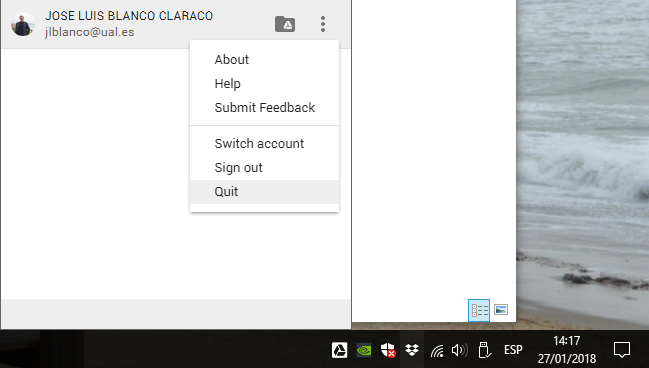

In a multi-session environment such as Remote Desktop Services, this creates an issue where multiple users can see each others' drive folders, although the contents of the drives are inaccessible. The default behavior provided by Drive FS is to map the user's Google Drive data to a system-wide network drive on their Windows Desktop. If you're a Google Workspace administrator, you have two months to test and deploy the new app before Backup and Sync curls up and dies on October 1.Google Drive File Stream (Drive FS) is a utility that allows users to access their Google Workspace Drive data like a local drive on their Windows desktop. In other words, if you're a Google Drive user, it's time download the new app-there's no point in putting it off. This includes free personal accounts and paid enterprise Google Workspace accounts. The answer is simple, but we want to draw a heavy underscore because it's not typical these days- all Google service users can use the new Drive app. The deprecated Backup and Sync app will cease functioning entirely on October 1.
 Integration with Microsoft Outlook and Google Meet schedulingĪccording to Google's introduction, users of the older Backup and Sync app will start getting in-app prompts to transition to Drive for desktop, which it recommends users complete by September of this year.īackup and Sync users will support a guided workflow for transitioning from the old app to the new on July 19, and Google Workspace domains (both Rapid and Scheduled release tracks) will see in-app notifications prompting transition beginning on August 18.
Integration with Microsoft Outlook and Google Meet schedulingĪccording to Google's introduction, users of the older Backup and Sync app will start getting in-app prompts to transition to Drive for desktop, which it recommends users complete by September of this year.īackup and Sync users will support a guided workflow for transitioning from the old app to the new on July 19, and Google Workspace domains (both Rapid and Scheduled release tracks) will see in-app notifications prompting transition beginning on August 18.  In-app support for shared Google drives (new feature, was not present in Backup and Sync). Locally mounted Drive folders in either Stream or Mirror mode-automatically downloading files on-demand or automatically prefetching all files from the cloud.
In-app support for shared Google drives (new feature, was not present in Backup and Sync). Locally mounted Drive folders in either Stream or Mirror mode-automatically downloading files on-demand or automatically prefetching all files from the cloud.  (Optional) two-way file and folder synchronization-automatically download files to local folders and vice versa. Syncing external storage devices (thumb drives, USB hard drives, and SSDs) to Google Drive. Uploading and syncing photos to Google cloud storage-including automatic compression and resizing, for those choosing "Storage saver" rather than original image quality. Featuresįrankly, there doesn't appear to be much new in the upgraded app-the update looks like more of a clean-up and unification effort than anything else. The new Drive app builds in features from Google Photos, Backup and Sync (the old, primarily consumer app), and Drive File Stream (the old, business-targeted version). Google has released a new Google Drive desktop app that replaces old versions for both home and business.
(Optional) two-way file and folder synchronization-automatically download files to local folders and vice versa. Syncing external storage devices (thumb drives, USB hard drives, and SSDs) to Google Drive. Uploading and syncing photos to Google cloud storage-including automatic compression and resizing, for those choosing "Storage saver" rather than original image quality. Featuresįrankly, there doesn't appear to be much new in the upgraded app-the update looks like more of a clean-up and unification effort than anything else. The new Drive app builds in features from Google Photos, Backup and Sync (the old, primarily consumer app), and Drive File Stream (the old, business-targeted version). Google has released a new Google Drive desktop app that replaces old versions for both home and business.








 0 kommentar(er)
0 kommentar(er)
